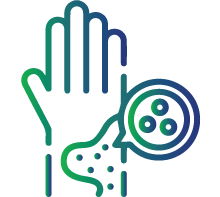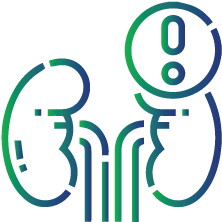
Cryoglobulins Screening (Qualitative) Test
Cryoglobulins screening (qualitative) test is a diagnostic tool used to detect and measure the amount of cryoglobulins present in the blood. Cryoglobulins are abnormal proteins that precipitate in blood at cold temperatures, potentially causing vascular damage and symptoms such as Raynaud's phenomenon or organ damage. This test aids in diagnosing conditions such as cryoglobulinemia and monitoring their progression.
Thus, getting this test done is recommended to diagnose cryoglobulinemia and other associated conditions.
Symptoms of Cryoglobulinemia
Common symptoms associated with cryoglobulinemia include:

Bruising of skin

Rashes (or) purpura (purple patches)

Joint (or) muscle pain

Fatigue

Raynaud’s phenomenon (Pain, paleness, bluing, numbness of fingers and toes on exposure to cold)

Skin ulcers
What is Cryoglobulins Screening test used for?
The cryoglobulins screening test is performed:

To diagnose cryoglobulinemia in individuals exhibiting symptoms

To evaluate vasculitis, glomerulonephritis, and lymphoproliferative diseases (in patients who show symptoms due to cold exposure)

To evaluate macroglobulinemia or myeloma (in patients who show symptoms due to cold exposure)
Preparation for the test
Prior to the test, it is important to fast for 8 hours. Only drinking water during this time is recommended. Inform your healthcare provider about all medications, herbs, vitamins, and supplements you are currently taking, including over-the-counter medications, as well as any illegal substances (drugs) you may be using.
Interpretation of the test results
Test results are available either positive or negative.
Positive
If you test positive for cryoglobulins, it means these proteins visibly thicken when your blood sample is cooled.
A positive test result may indicate:
- Cryoglobulinemia (Blood protein)
- Multiple myeloma (Bone cancer)
- Rheumatoid arthritis (Joint inflammation)
- Leukemia (Blood cancer)
- Lymphoma (Lymph cancer)
- Hepatitis (especially hepatitis C) (Liver infection)
- Infectious mononucleosis (Viral infection)
Systemic lupus erythematosus (Autoimmune disease) Your healthcare provider may call for additional tests to confirm the diagnosis.
Negative
A negative test result indicates that the antibodies in your blood remain dissolved even when the blood is cooled.
FAQs
How is the sample collected for cryoglobulins screening (qualitative) test?
Your healthcare provider will insert a small needle into a vein in your upper arm and collect a few mL of blood. It might cause a feeling of slight sting or a bruise at the site of needle insertion. This usually resolves within a few minutes to a couple of hours.
Does this test pose any risks?
This test carries negligible risks. However, you may experience bleeding, infection, bruising, and a feeling of lightheadedness.
What is the turnaround time (TAT) for cryoglobulins screening (qualitative) test results?
The test results can be obtained within 2-10 working days after the sample collection. TAT may vary, depending on the particular diagnostic clinic.
What are the different types of cryoglobulinemia?
There are three types of cryoglobulinemia:
Type I: Monoclonal immunoglobulin, associated with myeloma or lymphoma.
Type II: Mixture of monoclonal and polyclonal immunoglobulins, linked to hepatitis C or other viral infections.
Type III: Polyclonal immunoglobulins, observed in individuals with autoimmune diseases.
Can someone prevent cryoglobulin-related symptoms?
Taking precautions to avoid cold temperatures and objects can be effective in preventing or reducing symptoms related to cryoglobulins.

